From oysters to spices to Sichuan carpaccio, Bordeaux’s food reflects the perks of being a city on the crossroads of global trading routes.
Bordeaux might look unsullied, perhaps too proud of the grand sweep of 18th-century classical architecture that has made its waterfront and historic old town UNESCO-protected, but like any port city, it has always had an eye on the wider world. Roman empire-builders, Basque merchants, British colonizers, Dutch shippers, Chinese billionaires: all have passed through here over the past 2,000 years, leaving their mark on the architecture, the commerce, and the food.
Bordeaux is slap-bang in southwest France, three hours from the Basque country and the Spanish border, with its spicy Espelette peppers, Brébis cheese, and salted anchovies. It’s an hour from the Dordogne, land of black truffles and glistening foie gras, and two hours from Toulouse, with its cassoulet and abundance of sunshine-fed fruits. You can enjoy all of this in Bordeaux, often straight from the producers who head over to Bordeaux’s central Capucins market when their produce is in season. But Bordeaux also has food all of its own that reflects the particular advantages of being a port city, on the crossroads of global trading routes.
Oysters, La Cabane d’Hortense, Cap Ferret
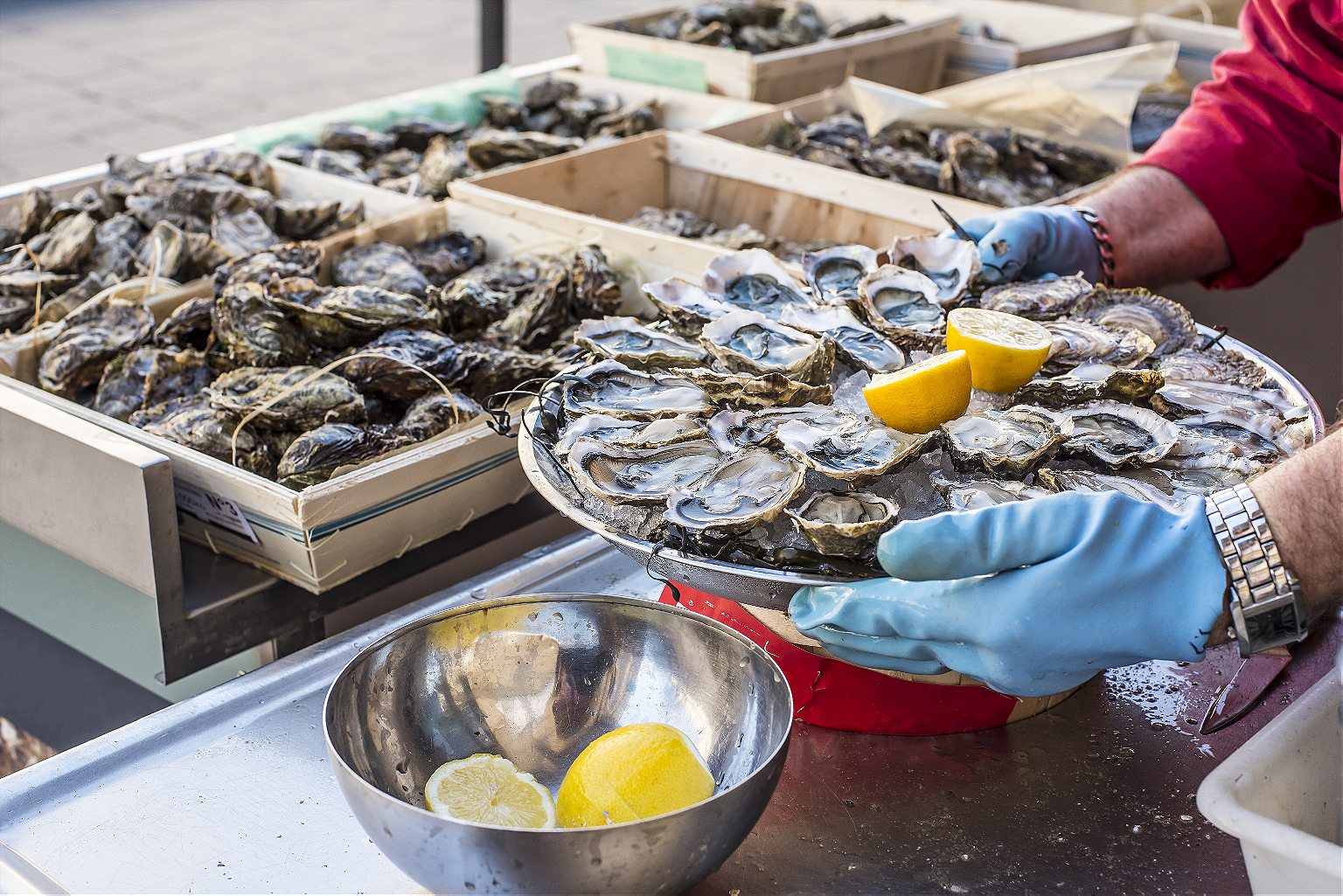
Water governs everything in Bordeaux, from the Garonne and Dordogne rivers to the Atlantic beaches and Arcachon Bay. This tidal bay provides a living for over 315 separate oyster farmers, producing 10,000 tons of oysters a year.
Modern cultivation of oysters in Arcachon dates back to the 19th century, but it was the Romans—who arrived in 56 A.D. and stayed for more than three centuries—who really fired up local appetites. The Romans had a serious obsession with oysters. (Emperor Vitellius supposedly devoured over 1,000 of them in one evening.) As they expanded their Empire, they were constantly on the lookout for new sources of edulis to be sent back to Rome, and they quickly found that in the Bordeaux region the best were gathered by the Meduli tribe (the name eventually became the Médoc) along the marshy shores of a narrow peninsula that lay to the north of their new colony.
Pliny the Elder mentions these Médoc oysters in his 4th-century writings, as does Ausonius, a poet who gave the world one of the early culinary rankings when he divided France (or Gaul as it was then) geographically according to the quality of its oysters. The Médoc, which is known today for its manicured rows of vines, came top of his list.
Somehow, perhaps in the rush of reclaiming this once seriously soggy land for the planting of vineyards, Médoc oysters were forgotten, and doubts over the water meant they were banned entirely for 25 years. But there’s a revival afoot, based around the river port of Saint Vivien on the Garonne Estuary, where the art of the estuary oyster is being rediscovered in the salt marsh ponds of Bertrand Lung and five other farmers. Known now by their ancient name, Gigas Medulli, these oysters are a little creamier and fleshier than those you find from Arcachon. Keep it simple with a squeeze of lemon, or do like the Bordelais and add red wine vinegar and finely chopped shallots.
Saffron
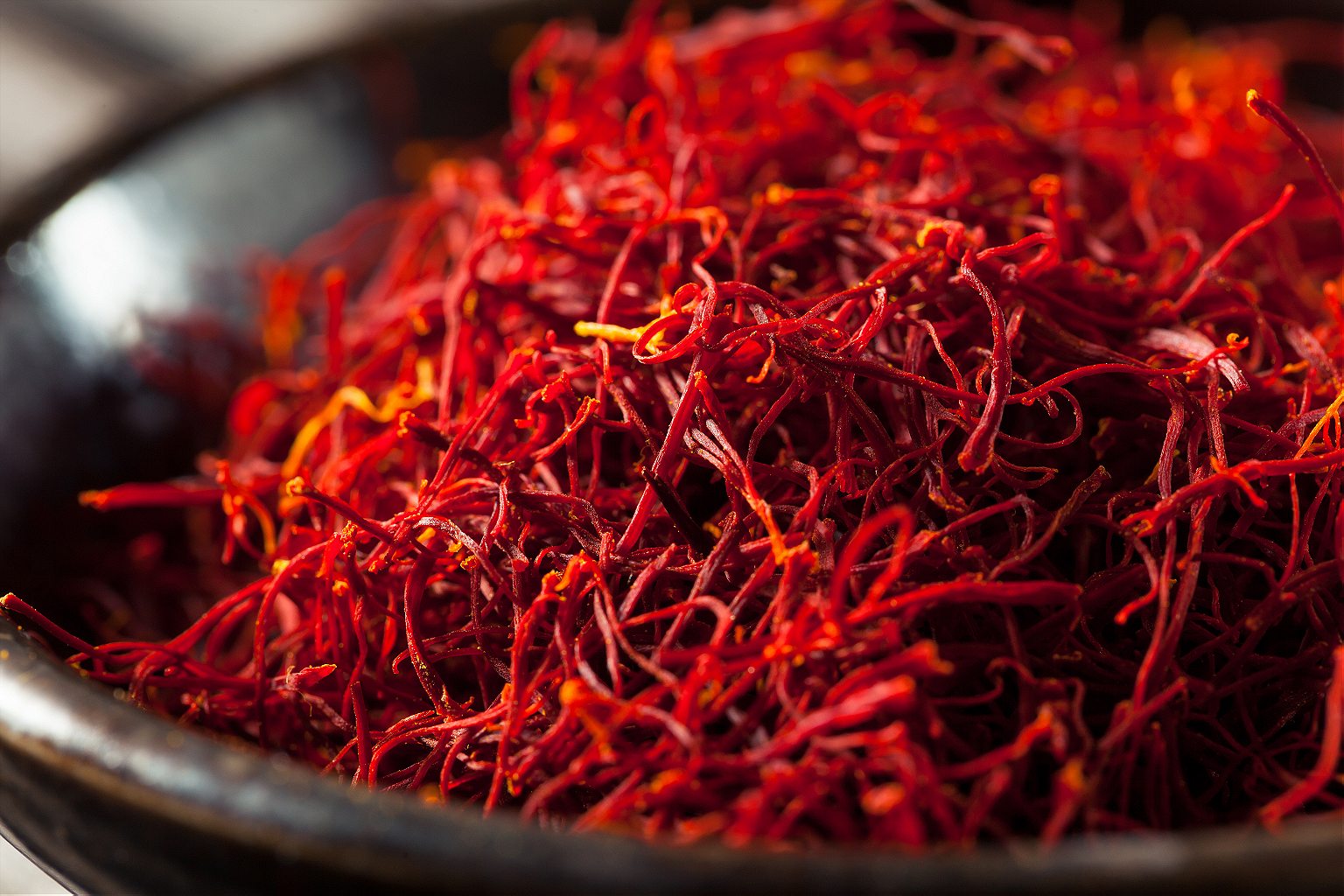
At its height in the 18th and 19th centuries, the quayside of Chartrons would have been a forest of sailing ships flying flags from dozens of countries. Just a few steps back from the waterfront, the CAPC modern art museum stands as testament to this, its cavernous interior once a trading warehouse to stock sugar, saffron, pepper, vanilla, capers, coffee, chocolate, tobacco, cotton and indigo, all brought in from French colonial outposts in Canada, America, Africa, and the West Indies.
Ships loaded with barrels of wine from Bordeaux would head of to Hamburg and other Baltic cities, then leave carrying oak, and head off to the Americas and the West Indies before returning to Europe loaded with exotic spices, as well as on occasion, fee-paying travellers—and, of course, non fee-paying slaves. There is a monument to the slave trade on the Quai de Queyries on the right banks of the river in Bordeaux, and remembrances of the city’s spice trade on menus everywhere.
One of my favorite places to track down unusual spices is the brilliant Dock des Epices on rue Saint James, a pedestrianized street in the city’s old town that dates back to the 13th century and the Compostela pilgrimage route. This store is the single best place to come in Bordeaux to find black lime, or Siam Tulip, or sumac. Or you can keep it truly local and head to Chantal Palette’s organic crocus farm just a short way to the north of the city in Ambares-et-Lagrave, where she cultivates her own saffron.
Entrecôte à la Bordelaise, Brasserie Bordelais
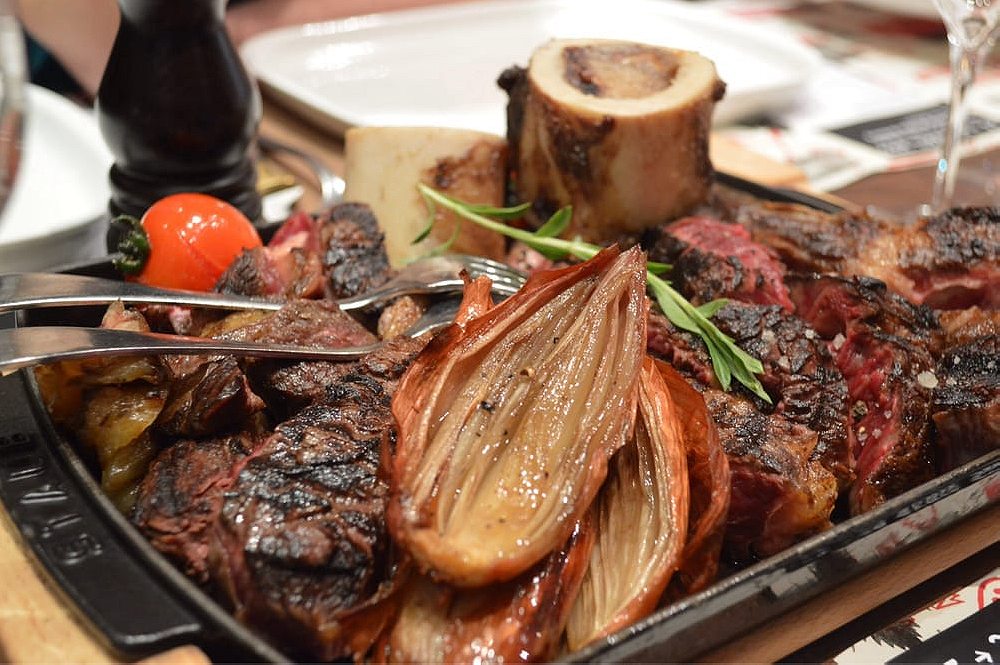
Maybe it’s the oceans of red wine that they consume (the vineyards are 90 percent given over to red grapes like Merlot and Cabernet Sauvignon) but the Bordelais are carnivores through and through. A local speciality that dates back to the 18th century is the Agneau de Pauillac, a lamb that is raised since birth on its mother’s milk. I once spent a day with Dominique Reyes, the last producer in the tiny port town of Pauillac itself, a place where in the 1820s over 1,000 lambs—from sheep that had come down from the Pyrenées—each year met their maker.
Today, the lambs are raised across the Gironde region but no longer in Pauillac, leaving Entrecôte à la Bordelaise unchallenged as the signature local meat dish. To really keep things traditional, you need to find Bazas beef, a local grass-and-grain-fed breed that was first developed over 700 years ago. Over 280 small farms raise the beef, with only 13 local butchers approved for ageing and selling the meat.
Every year on the Thursday before Shrove Tuesday, you’ll find the oxen festival in Bazas that has taken place since the 13th century, where the butchers parade their best specimens through the streets. When it comes to eating, locals will grill the entrecote over vine shoots, then serve with a sauce made from red wine, butter, shallots, herbs and bone marrow. You could always try asking a friendly vigneron for some offshoots if you are here during pruning season and grill up a steak yourself. Or if you’re hungry in downtown Bordeaux, head to the Brasserie Bordelais restaurant. Always busy, walls lined with wine bottles, this place is hard to beat for sheer juicy consistency of their entrecôte—served, of course, with a large plate of frîtes cooked in beef fat.
Cèpes de Bordeaux, Café Lavinal

The first time I had these rich, meaty mushrooms was at a neighbor’s house when I first moved to Bordeaux. They grow perfectly here, a reflection of Bordeaux’s maritime climate and the abundance of pine forests (many of which were planted along the Atlantic coast to provide a buffer from coastal breezes.) At the time we lived out in Entre deux Mers, where life was slower, focused far more around the seasons than it ever is in Bordeaux city.
Traditionally when the wine harvest ends, cèpes harvest begins, and I remember the excitement that gripped the village when the first ones came into season, and the slightly overbearing way in which I was told that the French never never wash them in water, but instead simply brush the dirt off or wipe them with a damp cloth to ensure the flavor is in no way diluted. I get why now; if they are not prepared perfectly, they can be almost greasy, so rich are they in texture, but when simply fried in butter with salt, shallots, garlic, and a scattering of parsley, they are delicious.
They are at their height in late summer right through until November, where you find them on roadside stalls and local markets. If like me you don’t find them the easiest mushrooms to cook at home, the best thing to do is to head to a traditional bistro like Café Lavinal up in Pauillac, and ask for the simplest preparation that they do, matched with a local glass of Pauillac or Saint Julien wine.
White asparagus, La Tupina
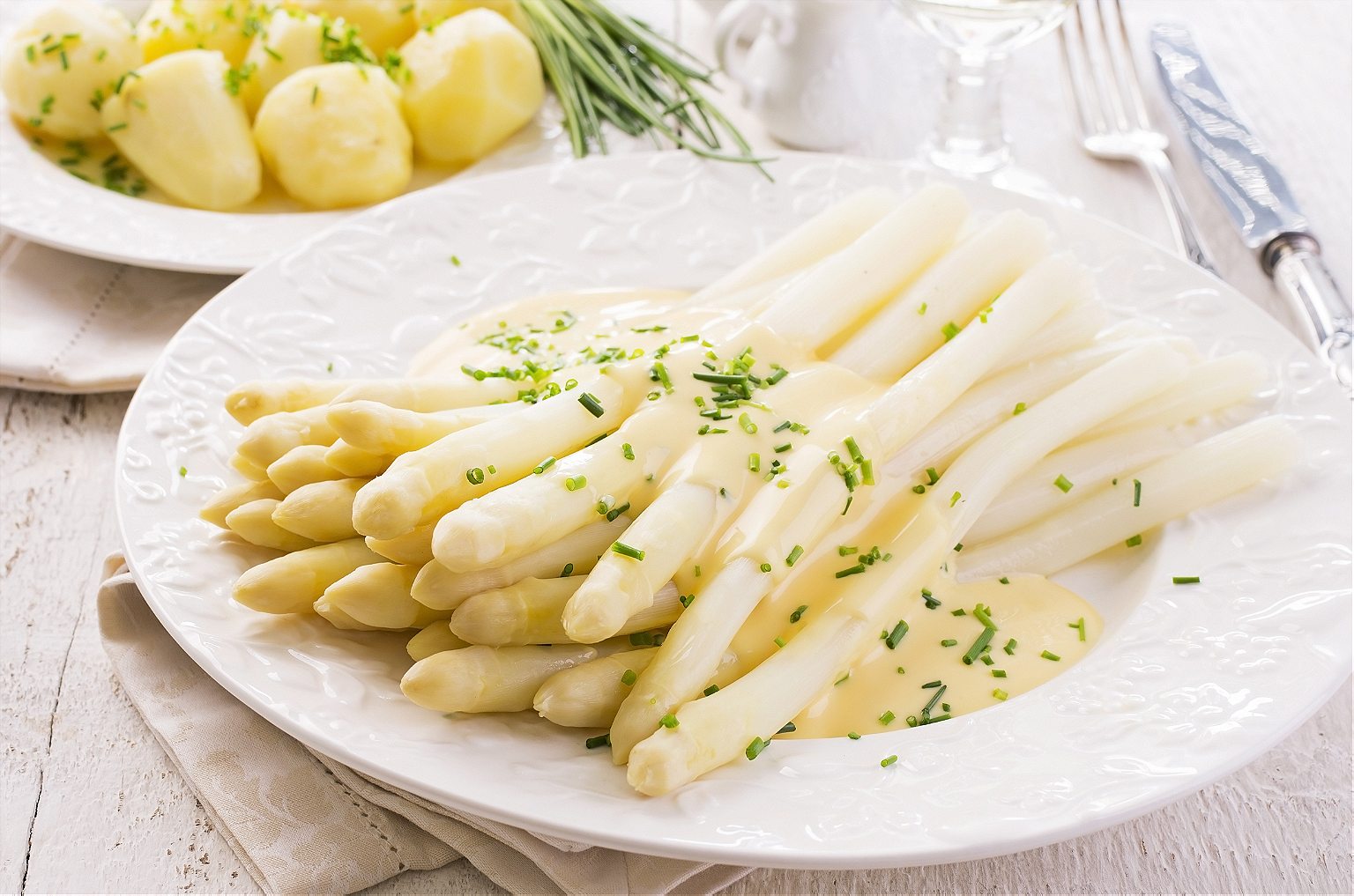
They say the French have been cultivating asparagus since the Renaissance (though it’s not clear what color it was back then) and Louis XIV grew it in his greenhouses all year round.
It took me a long time to understand why anyone would want to eat white asparagus instead of the beautiful green shoots. The Bordelais go mad for the fleshier, thicker version grown in the Bourg and Blaye region, with their creamy flesh and faintly prurient violet tips. Bourg and Blaye are directly opposite the Médoc, on the other side of the Gironde Estuary, but while the Médoc gets all the glamor and the money for its wines, the producers over here toil for a fraction of the reward, which may be why so many of them also grow asparagus on their farms, making their loss our gain. The key is that the black sand soils, rich in humus, are perfect for coaxing out a sweetness and smoothness in the asparagus that makes them melt in the mouth.
Try it at La Tupina restaurant in Bordeaux, where Jean-Pierre Xaradakis, who has a family house in Blaye, receives them fresh every day during asparagus season (from April to June) and serves them with a simple vinaigrette (so much better than the mayonnaise that they are served with everywhere else).
Aquitaine caviar, Hotel Saint James, Bouliac
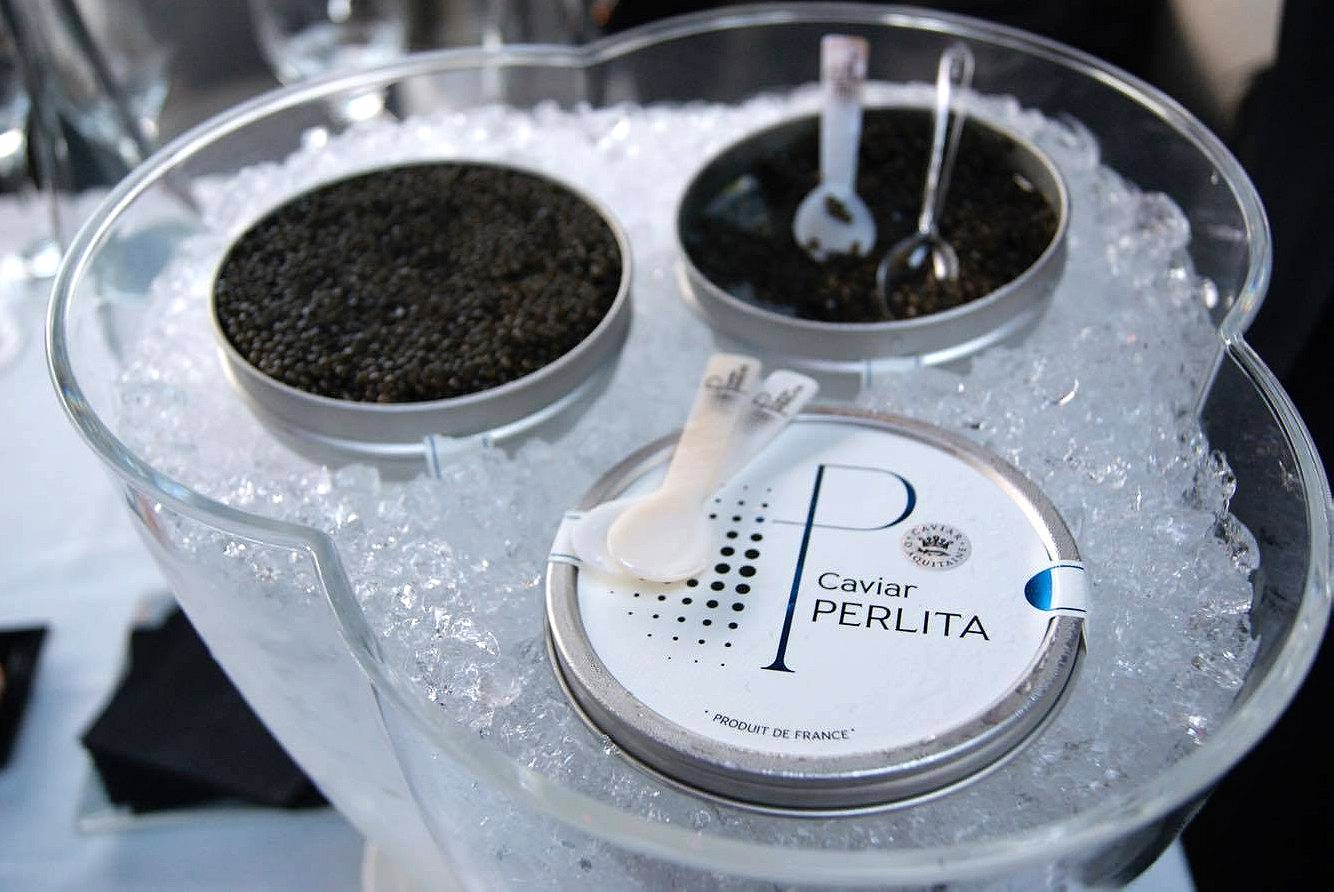
The story goes that in the 1920s, a Romanov on the run from the Russian Revolution ended up in Saint-Seurin d’Uzet, a small town on the Garonne estuary where local fisherman had been catching wild sturgeon for centuries.
The locals would eat them without harvesting their eggs, until their Russian visitor showed them what they were missing. Within 15 years they were producing 15 tons of caviar a year, until overfishing put paid to the trade. Fishing wild sturgeon has been forbidden since 1982, but around 20 years ago, ‘ethical’ sturgeon farms have been reintroduced by—depending on who you talk to—the Welsh marine biologist Alan Jones or local Frenchman Jacques Carré.
Today the Bordeaux area is the biggest producer of farmed caviar in France, treated like fine wine or cheese with an affinage of three to six months. If you can get hold of a tiny box of caviar butter, I thoroughly recommend it, but to go all out, my favourite place for indulging is the Hotel Saint James in Bouliac, where chef Nicolas Magie produces the most amazing array of dishes with it.
Bonus: The hotel also hosts a market four times a year, where producers from around Aquitaine who supply Magie’s Michelin-starred restaurant sell to the public: oysters from Joël Dupuch, gateaux Basque from Maison Paries, charcuterie from Eric Ospital, goats cheeses from Christain Teulé, and the incomparable caviar Sturia)
Beef Carpaccio à la Sichuanaise, Le Coffret des Saveurs

Is Bordeaux a barometer of world power? Tracking the history of who was (and is) drinking the best Bordeaux wine does seem to reveal the dominant social groups of the time. The English aristocracy were insatiable clients for expensive claret in the 17th century, followed by the Dutch in the 18th century, soon joined by the Americans on the recommendation of both John Adams and Thomas Jefferson.
The most recent converts have been the Chinese, who first showed an interest in 1986, after then-president Li Peng presented red wine as a healthy alternative to their grain spirit. In the past decade, China has become the major export market for Bordeaux wines, with increasing numbers of Chinese buying a slice of their own vineyards (around 150 at last count). The city’s restaurants may have been a little slow to catch on, with the notable exception of Au Bonheur du Palais, now 30 years in Bordeaux and still going strong.
But my favorite is Le Coffret des Saveurs, opened by Hui Zhou and chef Wang, who served first under the Shan brothers at Bonheur du Palais and who have now set up on their own. But it’s more than a symbol of the city’s recent history of the city; it is also one of the best places to eat in Bordeaux—especially, in my opinion, for the beef carpaccio ‘à la Sichuanaise’—silky, meltingly soft slices of beef laced with salty sweet Sichuan peppers.
Macarons, Macaron Saint Emilion

The Bordelais have a sweet tooth. Maybe it’s a hangover from all those days shipping colonial sugar around the world, but you’ll find patisseries fighting turf wars in every corner of the region.
The oldest sweet delicacy you can find will be by pushing open the door of 9 rue Guadet in Saint Emilion. This Medieval village overlooking the Dordogne valley has its own take on the macaron, showing the brightly-coloured confections of Parisian names like Ladurée and Carette that subtlety and understatement is best. Dating back to 15th century, the local macarons are made from just three ingredients: egg whites, icing sugar, and almond flour. They make clear that Saint Emilion has always had its own rules: This is a place built on religion, and was a draw for the pious long before the local wine came along. Even today it’s a pilgrimage site, so no surprise that its most famous delicacy was first made in 1620 by a community of nuns known as Les Ursulines.
For many years, the guardian of the original recipe was Madame Blanchez on rue Guadet, now passed on to Nadia Fermigier. The place is unassuming, the soul of simplicity (although my guess is you’d find gold-plated taps in the bathrooms upstairs, such is their popularity), with the sole concession to the times being that you can now order the macarons online.
Canalés, Baillardran
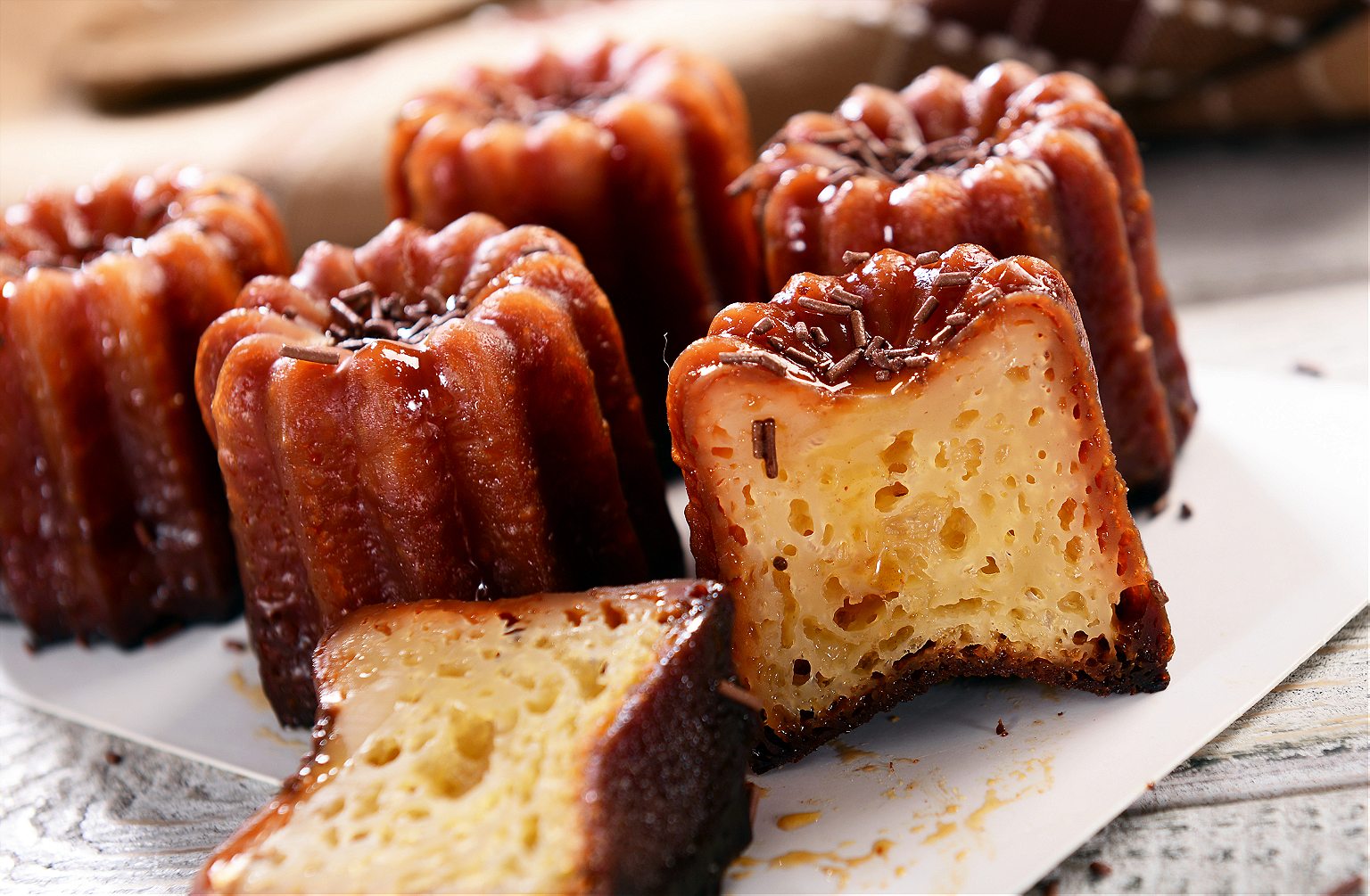
You may have heard that the Bordelais know a thing or two about wine. There have been various groups making wine here continually for two millennia, handing knowledge over from one generation to the next. One of these is the practice of fining wine, meaning using protein to bind together and then easily remove the various bits of yeast cells, fragments of grape skins, and phenolic particles that are left after a wine has finished fermenting its sugars into alcohol.
In Bordeaux, this process is traditionally done with egg whites, usually by whisking them up in a bowl then adding them directly to the barrel, leaving them for around 40 days, then racking off the now clean wine. Why am I telling you this? Because the side effect of all of this is a whole load of egg yolks, and over the years inventive locals have come up with a host of uses for them. The best one must be the canalé, a tiny domed cake that is just a little bit burnt on the outside and soft and chewy inside, made with flour, sugar and egg yolks, and flavored with vanilla and rum.
The first canalés dates back to the 16th century and were mainly used to feed the local poor, perhaps because it was the cellar masters’ wives who first perfected the recipes (although some say it was created in the Annonciades Convent on rue Magendie in Bordeaux).
One name stands over all local producers today—Baillardran. The stores are found so regularly that it’s easy for forget this is a local business, started only in 1988 by Philippe and Angèle Baillardran. They keep themselves busy today, making around 20,000 cannalés a day, and maybe three times that over Christmas and Easter (with any unsold going to local charities, keeping another ancient tradition alive).
Les Dunes Blanches de Bordeaux, Chez Pascal
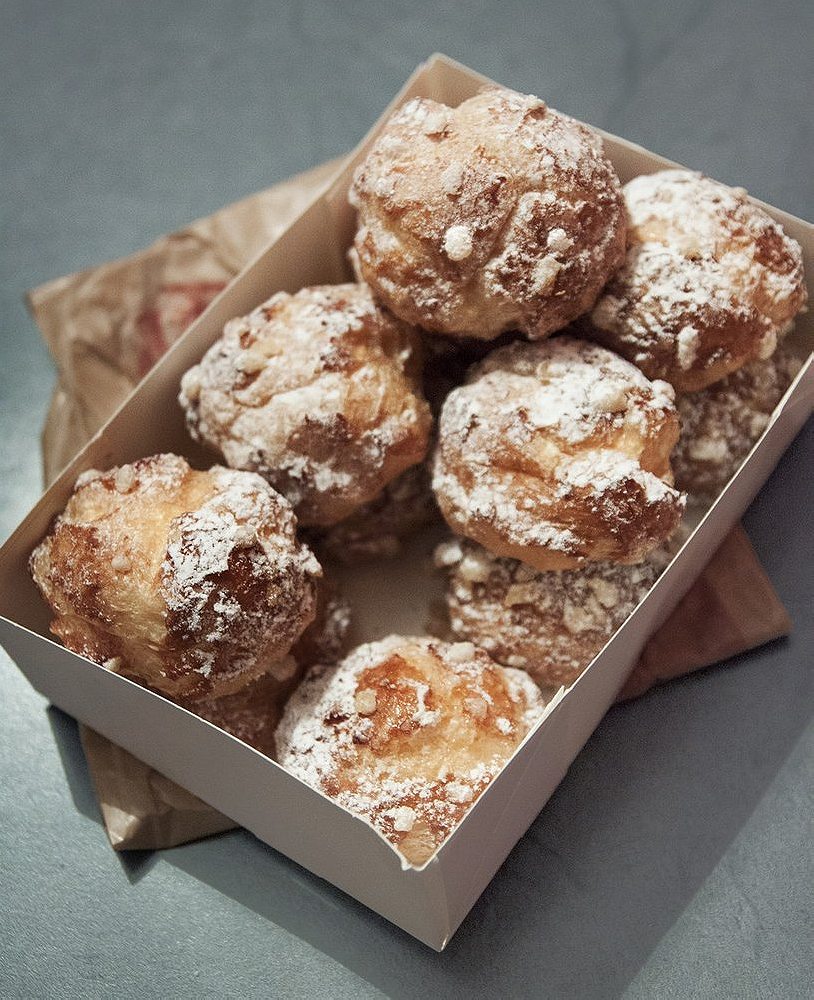
Completing the trio of Bordeaux patisseries are the dunes blanches de Bordeaux, named after the mighty Dune de Pyla sand dune that towers over the Atlantic coast on the southern tip of Arcachon Bay. It stands around 360 feet tall, around 1640 feet, wide and 1.6 miles long. In 2009, Pascal Lucas, a patissière in Cap Ferret, took the dune as his inspiration to make what has become—-in under ten years—the staple choice for discerning dinner parties all over the region.
Tiny choux buns filled with lighter-than–air cream, dusted with sugar (yes, that’s the sand). They’ve been compared to Proust’s madeleines, and just like the original sand dune (a UNESCO World Heritage Site since 2007) they are fiercely protected: these tiny items cost a rival pâtissier a 200,000-euro fine for supposedly passing them off as his own without due credit to Lucas. And you no longer have to go to Cap Ferret to get your fix: there is now a store in downtown Bordeaux. A perfect way to round off any of the meals on this list of Bordeaux’s most important and best-loved dishes.